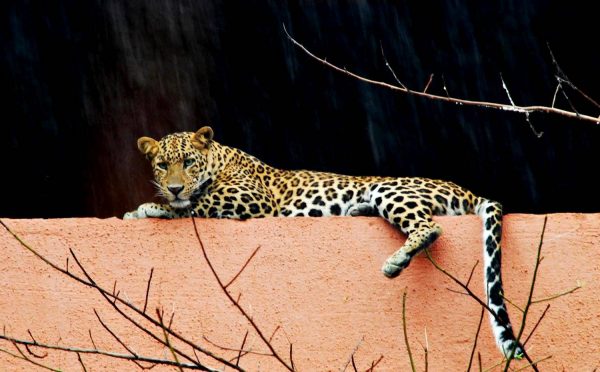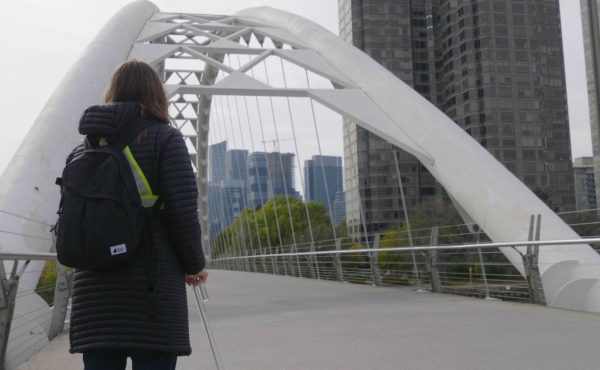I am currently on sabbatical leave in Mumbai, India. Last week, I went to an eye-opening lecture at IIT Bombay by Dr. Sunetro Ghosal, “Immoral Wilderness in Urban Spaces.” He raised provocative questions not just about where leopards should live, but what we understand a city to be and how we measure risk.
I came out of the talk chatting with the speaker and another colleague. We found ourselves wondering if it would be good to think of cars the way we think about leopards. Let me explain how we got there, and why this might be a useful way to think about cities right now, in light of the pandemic-related struggles of public transportation and an associated rise in car use.
Many wild animals live within the municipal boundaries of Mumbai, including large carnivores. Their presence in the city, especially very close to houses, frightens residents, some of whom feel those animals have no “right” to be there and should somehow be permanently removed.
India’s Wildlife (Protection) Act, 1972, among the strongest such legislation in the world, ranks animal protection according to six schedules. Those in Schedule V are considered “vermin” and can be killed without penalty. These currently include crows, rats, mice, and fruit bats. The list has also previously included foxes.
It is also possible for the central government to declare animals (other than Schedule I and part of Schedule II) in a specific area as “vermin” for a limited period of time, and chief wildlife wardens can authorize the hunting of specific animal that has been determined to be a threat to life or property. Various parties have petitioned over the years to have protected animals declared vermin. Determination of animals as “vermin” is mostly about nuisance, damage to economic assets like crops, and health risks.
All large carnivores are included in Schedule I and provided the strongest protection. Yet the Wildlife Minister in the state of Kerala also recently commented that the state might consider (as locals had requested) a tiger cull in the wake of a famer’s death from an attack. Some Mumbai residents feel similarly about leopards when they are spotted near residences.
Dr. Ghosal explained that the main obstacle to improving the safety of interactions of humans and wildlife (for both parties) is the way we think in oppositional dualisms, such as urban/rural or civilized/wild, instead of recognizing the greater interweaving and complexity that exists.
Indeed, we often think what defines a city is the absence of wildlife. Another wildlife expert, Dr. Vidya Athreya, has argued that the idea that humans do not or should not encounter leopards is “a completely urban construct.” Dr. Ghosal pointed out that developmental plans don’t even mention animals. How can we plan for safe coexistence with wildlife if we don’t even acknowledge their existence at all?
The highest number of leopard attacks on people in Mumbai was in 2003-04, with 25. In an average year, there are maybe one or two deaths.
Meanwhile, 75,000 people are bitten by dogs each year, and an average of 21 die from rabies as a result. (It is estimated that dogs are 60% of the leopard diet in Mumbai, and there is evidence that leopards help control the stray dog population and reduce the incidence of dog bites.)
But more than 20 times that number are killed by the city’s most notorious “predator”: Mumbai had 447 automobile-related deaths (from collisions; not counting pollution) in 2019, 47 percent of which were pedestrians. Mumbai is far from India’s most lethal city; in 2019, the city of Delhi had 1,463 deaths from road collisions.
It’s not just a problem in India; road collisions are the leading cause of injury and death in young people around the world.
If we felt the same way about every person killed by a car as one killed by a leopard or tiger, I suspect we would have long since culled the cars in our cities and fenced them into reserve areas.
Not only have we not taken such steps, we have done the opposite: we build freeways through city centres; we give them storage space on roads rent-free; we remove bike lanes and pedestrian scramble intersections that slow cars down; we cut away sidewalk to round out corners and make turns faster. We have bent over backwards to accommodate the car. We have turned the city into its protected habitat.
Cars are never missing from our transportation plans. People and animals regularly are.
In Toronto, we have actually given serious consideration to whether pedestrians crossing the road while looking at their phones should be fined, including if they are crossing legally. What that reveals is that some have accepted the city is the habitat of the car, and humans are merely vermin, a nuisance to be cleared from the path of its movement.
Maybe it would be useful to see cars as the dangerous “predators” that they are.
What if we treated cars like leopards? Then we might recognize the real risk they pose to our well-being, and manage our interactions with them with extraordinary care. Maybe everyone with a suspended license should wear a satellite tracking collar so we know immediately when they get behind the wheel again. (I’m kidding.) (Sort of.)
Or, what if we categorized cars not only as predators, but also as vermin, whose population needs to be managed and controlled in the interests of public health? Maybe that would lead us not just to build safer sidewalks, but also to ban certain car designs, such as high front hoods. Maybe it would help us rethink whose habitat the city is. No one would ever think humans in Toronto could coexist with over a million leopards.
Urbanists have lessons to learn from wildlife experts here, especially to think of the city always as a habitat: for humans. It makes sense that people are afraid of animals that can seriously hurt them. But our sense of risk does not match where the greatest danger lies: we are nowhere near as afraid of cars as we should be.
If the city is first and foremost a habitat for people and other living things, then we should take all steps to prevent fatal encounters with dangerous creatures that threaten our lives irrespective of whether they are furry or have four-wheel drive.
The author would like to thank Dr. Sunetro Ghosal and Dr. Himanshu Burte for their helpful feedback on this column.
Photo by Steven van Dortmond.


